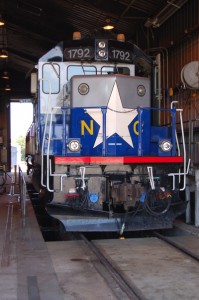Continuing the spotlight on light rail reporting, today’s editorial in the N&O expressed support for light rail, which is good:
“Transit has been a topic of discussion for so long that advocates of light rail and commuter trains in the Triangle had been on the verge of giving up – on light rail and on the possibility that Wake County residents would be given a chance to vote on a small transit tax, already approved in Orange and Durham counties.
But now light-rail advocates are taking heart with a study of rail lines and crossings in West Raleigh and eastern Cary, with an eye toward the day when there will be light-rail stations and accompanying development.”
I have to make somewhat of a correction myself, as there will indeed be light rail on part of the NCRR corridor between Cary and Raleigh. This is in addition to the “heavy rail” commuter rail service proposed between Cary and Durham on the existing tracks.
The N&O is not alone in throwing the “light rail” terminology around. WRAL had their own story called Wake commissioners lukewarm on light rail:
“Regional transit officials are excited over federal approval on Tuesday to enter project development on a 17-mile light rail system in Durham and Orange counties, but Wake County commissioners remain light on the idea.”
Technically, very few commuter rail systems in America are truly “light rail,” due to the stringent (some say impossibly high) standards the Federal Railroad Administration (FRA) imposes on the nation’s rail services. Therefore, with few exceptions (such as a day-night separation passenger and freight traffic) light rail systems require their own tracks. According to the Capital Area Friends of Traffic, we’ll be getting new tracks for our light rail system from Cary to Triangle Town Center mall:
“Phase II: Enhanced Transit Plan
Light Rail Service
Electric trains on new track
Runs 13.9 miles from downtown Cary, through downtown Raleigh, and up to Millbrook Rd.; eventually expanding to NW Cary/Morrisville and up to Triangle Town Center
Trains every 10 min. during peak and 20 min. off-peak
16 stations, with some over-lapping with commuter rail stations
Coordinates with local bus service
Links neighborhoods to provide intra-city travel and new transit-oriented development
Implemented by 2022
Costs $1.1 billion for construction, $14 million for operation
Requires federal and state funding as well as local revenue.”
That, as you’ll note, is Phase II of the transit plan as it’s obviously much easier to get commuter rail going on existing tracks.
So, bottom line: are we readying for light rail? Yes we are, but we’re going to do heavy rail first. That’s really my quibble with this reporting.
